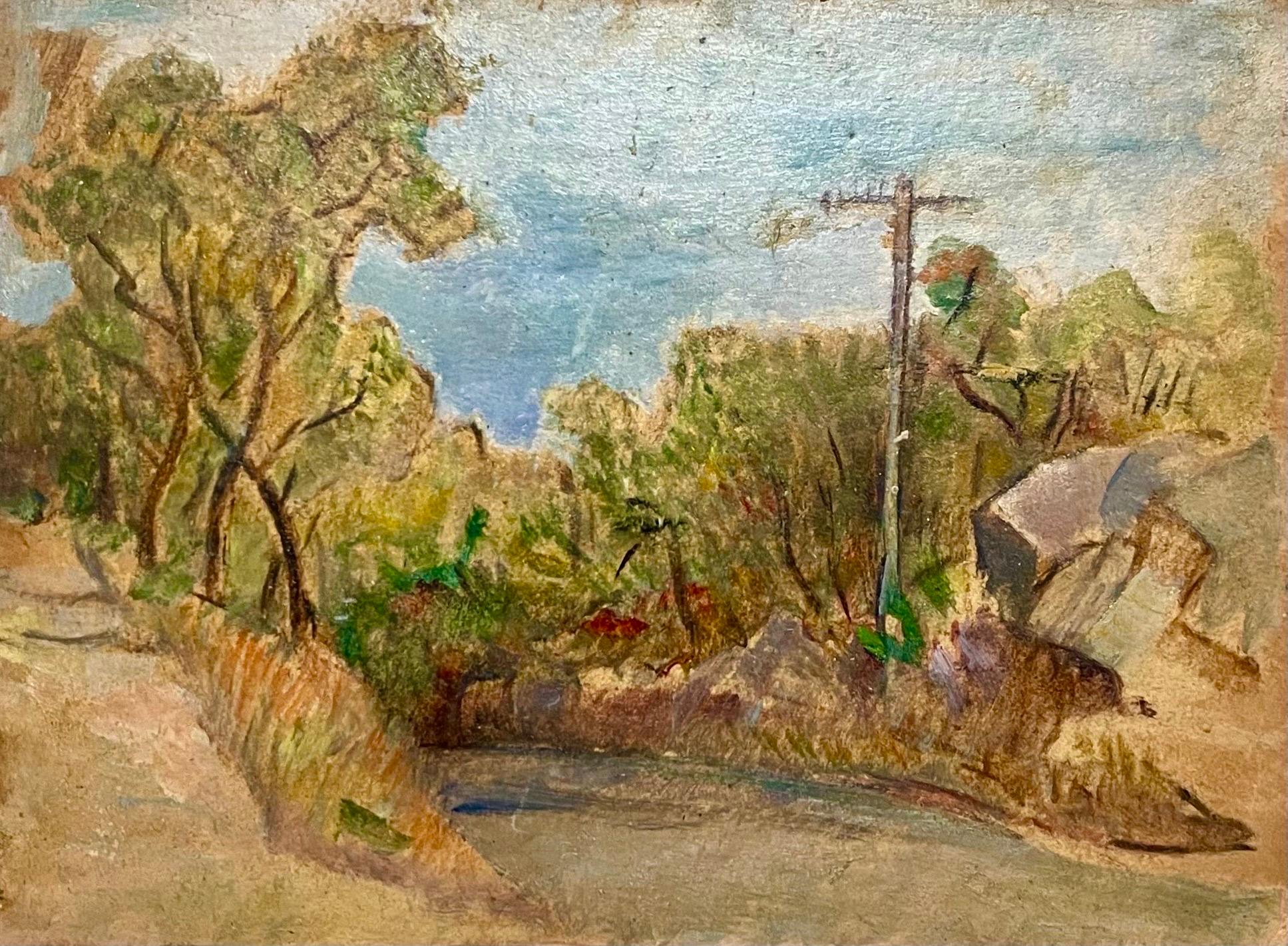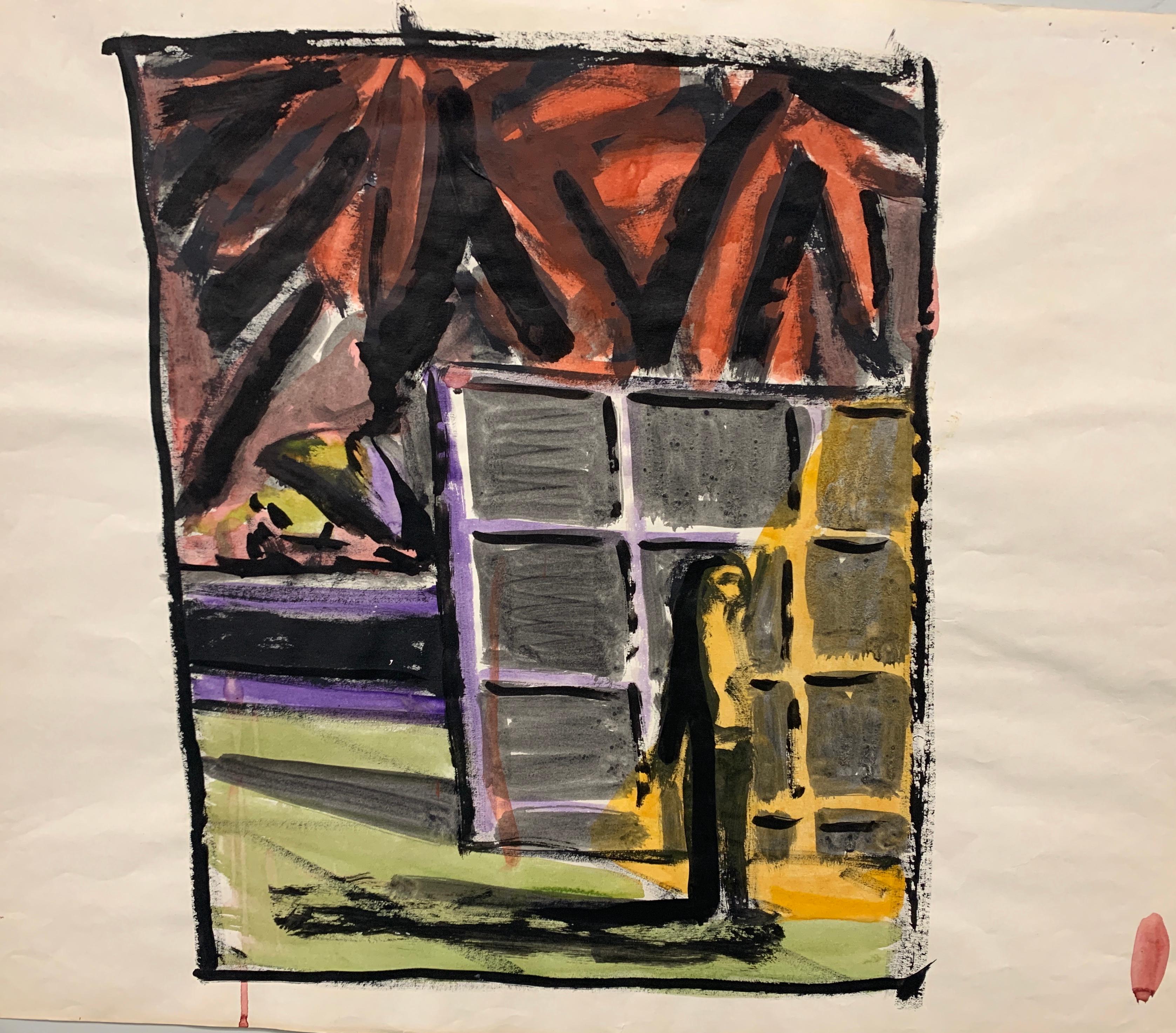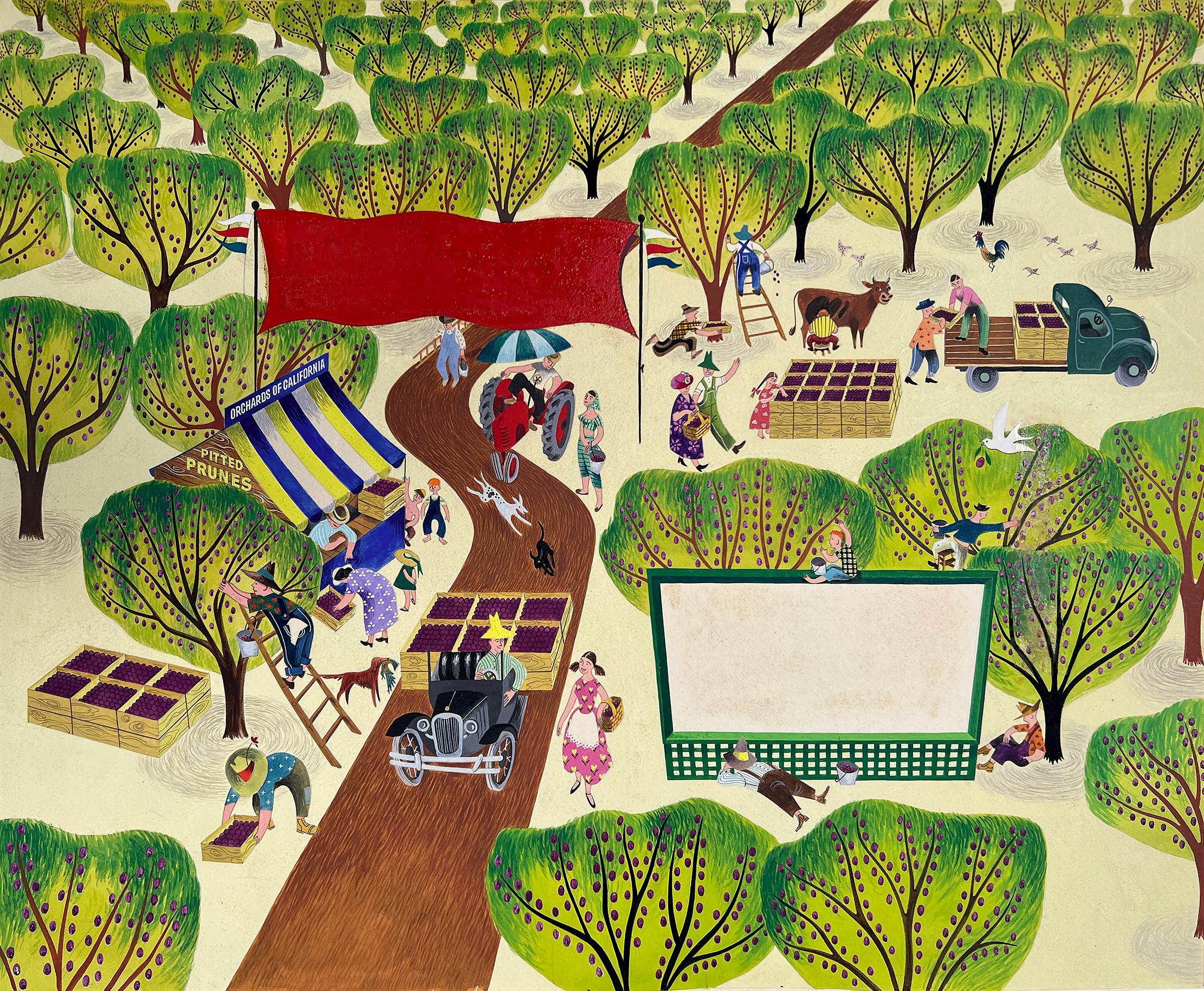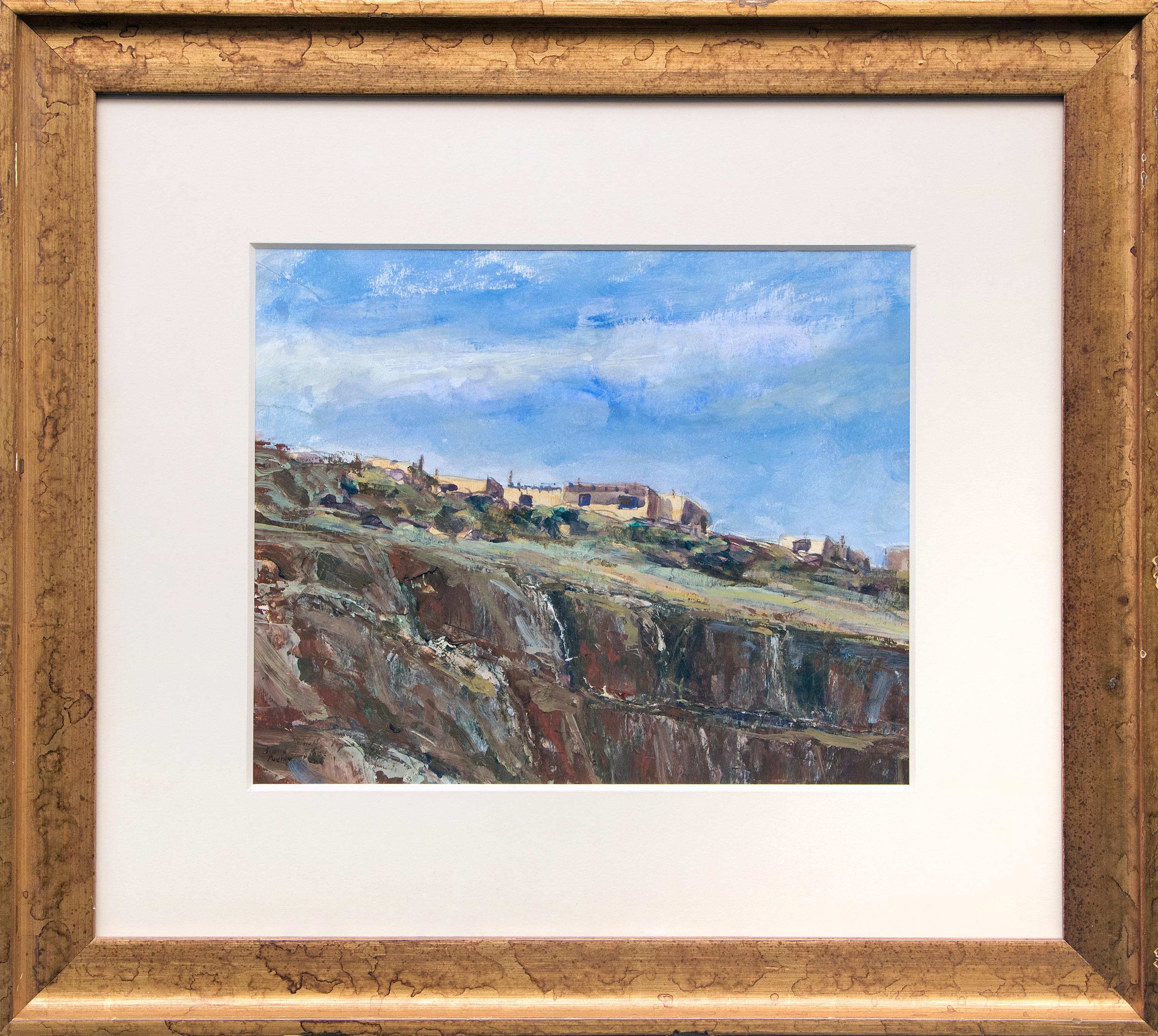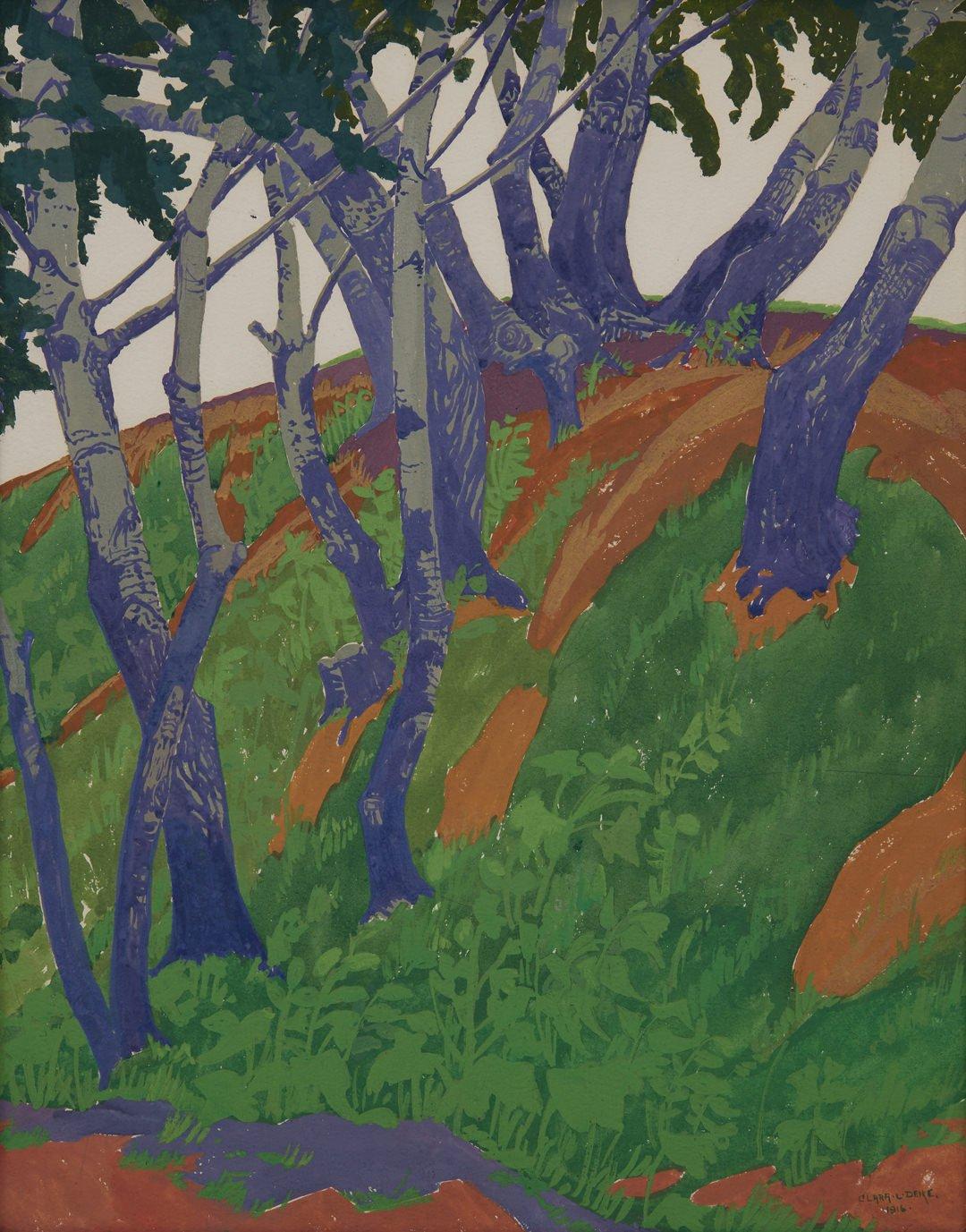Items Similar to "The Glorious Flight - Across the Channel with Louis Bleriot" - Children's Book
Want more images or videos?
Request additional images or videos from the seller
1 of 13
Alice and Martin Provensen"The Glorious Flight - Across the Channel with Louis Bleriot" - Children's Book1983
1983
About the Item
Study for "The Glorious Flight - Across the Channel with Louis Bleriot"; 1983; Gouache on Illustration Board; 14.5" x 13.75"; Signed Lower Right; Unframed.
From Wikipedia, the free encyclopedia
Alice Rose[1] Provensen (née Twitchell; August 14, 1918[2] – April 23, 2018[3]) and Martin Provensen (July 10, 1916 – March 27, 1987) were an American couple who illustrated more than 40 children's books together, 19 of which they also wrote and edited.[4] According to Alice, "we were a true collaboration. Martin and I really were one artist."[4]
Biographies
Their early lives were similar. Both were born in Chicago and both moved to California when they were twelve.[5] Both received scholarships to the Art Institute of Chicago, and both attended the University of California, though at separate campuses. After college, Alice went to work with Walter Lantz Studio, the creators of Woody Woodpecker, and Martin took work with the Walt Disney Studio, where he collaborated on Pinocchio, Fantasia, and Dumbo.
The pair met in 1943 when Martin, working as a creator of training films for the American military, was assigned to the Walter Lantz Studio. They were married in 1944 and settled in Washington, D.C., where they worked on war-related projects. After the war they moved to New York City where a friend helped them get their first job, illustrating The Fireside Book of Folk Songs.[5] They illustrated several Little Golden Books including The Color Kittens by Margaret Wise Brown (1949). In 1952, Tony the Tiger, designed by Martin, debuted as a Kellogg's mascot.
The Provensens were a runner-up for the 1982 Caldecott Medal as illustrators of A Visit to William Blake's Inn by Nancy Willard (who won the companion Newbery Medal). Two years later they won the Caldecott for The Glorious Flight, the story of aviator Louis Blériot, the first man to fly solo across the English Channel, which they also wrote.[6] The annual award by U.S. professional librarians recognizes the year's "most distinguished American picture book for children".[7] Eight of their books were named to The New York Times annual Ten Best Illustrated Books, including Our Animal Friends at Maple Hill Farm (1974) and An Owl and Three Pussycats (1981).[8] The couple were collaborative illustrators for Donald Waxman's "Pageants for Piano," a series of pedagogical primers.[9]
The couple lived for many years at Maple Hill Farm in Dutchess County, New York, which they portrayed in A Year at Maple Hill Farm (1978) as well as Our Animal Friends.[10] Martin died of a heart attack on March 27, 1987, in Staatsburg. Alice continued to live and work at Maple Hill Farm, publishing solo work such as The Buck Stops Here: the Presidents of the United States (1990) and My fellow Americans: a family album (1995), two presentations of people and events from American history (juvenile nonfiction) Punch in New York, published in 1991, received several honors and is dedicated to her grandson, Sean.
After turning ninety, Alice moved to San Clemente, California, to live with her daughter, Karen Mitchell, and her family. Provensen continued working (an addition was added to her daughter's house for a studio) well into her nineties. She died only four months before her 100th birthday.
Books
The Fuzzy Duckling, by Jane Werner Watson (Little Golden Book 1949)
Katie the Kitten, by Kathryn & Byron Jackson
The Little Fat Policeman, by Margaret Wise Brown and Edith Thacher Hurd (Little Golden Book 1950)
Tales from the Ballet, selected by Louis Untermeyer (Golden Press, 1968)
The Mother Goose Book (Random House, 1976)
The Provensen Animal Book (Golden Press, 1952), a.k.a. The Animal Fair
A Horse and a Hound, A Goat and A Gander ~Maple Hill Farm content
Town & Country
My Little Hen (Random House, 1973) ~Maple Hill Farm content
A Child's Garden of Verses (Simon and Schuster, 1951)
Leonardo da Vinci (Paper engineering by John Strejan, The Viking Press,1984)
The Golden Bible: The New Testament (Golden Press, 1953)
The Golden Treasury of Myths and Legends by Anne Terry White (Golden Press, 1959)
Aesop's Fables (Golden Press)
The Iliad and the Odyssey by Jane Werner Watson (Golden Press, 1956)
What Is a Color?
The Book of Seasons (Random House)
Golden Book of Fun and Nonsense
The Provensen Book of Fairy Tales
The Color Kittens, by Margaret Wise Brown (Little Golden Books, 1949)
Alfred Lord Tennyson's Charge of the Light Brigade (Golden; Paul Hamlyn, 1964) — an edition of Tennyson's 1854 poem
Our Animal Friends at Maple Hill Farm (Random House, 1974) ~Maple Hill Farm content
A Peaceable Kingdom: the Shaker abecedarius (Viking, 1978) — an edition of "Rhymes of Animals", Shaker Manifesto, July 1882
The Year at Maple Hill Farm (Atheneum, 1978) ~Maple Hill Farm content
An Owl and Three Pussycats (Atheneum, 1981) ~Maple Hill Farm content
A Visit to William Blake's Inn: poems for innocent and experienced travelers, by Nancy Willard (Harcourt Brace, 1981)
The Glorious Flight: Across the Channel with Louis Bleriot, July 25, 1909 (Viking, 1983)
The Voyage of the Ludgate Hill: travels with Robert Louis Stevenson, by Nancy Willard (Harcourt Brace, 1987)
Shaker Lane (Viking, 1987)
Come, Lord Jesus (~1965)
Funny Bunny by Rachel Learnard (Golden)
Fireside Book of Folk Songs
Fireside Book of Love Songs
Fireside Cookbook
Roses Are Red, Are Violets Blue? (Random House)
Instruments of the Orchestra, by Jane Bunche
Ten Great Plays, by William Shakespeare (Hamlyn, 1963)
Who's in the Egg? (Golden, 1970)
A Play on Words (Random House, 1970)
The Golden Serpent by Walter Dean Myers (Viking, 1980)
Birds, beasts, and the third thing: poems by D.H. Lawrence (Viking, 1982) — an edition of Lawrence's 1925 collection
Karen's Opposites (Golden, 1963)
Karen's Curiosity (Golden, 1963)
"The Old-Fashioned Cookbook" by Jan McBride Carlton (Weathervane Books, 1975)
- Creator:Alice and Martin Provensen (1918 - 2018, American)
- Creation Year:1983
- Dimensions:Height: 14.5 in (36.83 cm)Width: 13.75 in (34.93 cm)Depth: 1 in (2.54 cm)
- Medium:
- Movement & Style:
- Period:
- Condition:overall good condition with a few minor surface nicks - visible on close inspection.
- Gallery Location:Miami, FL
- Reference Number:1stDibs: LU385313813022
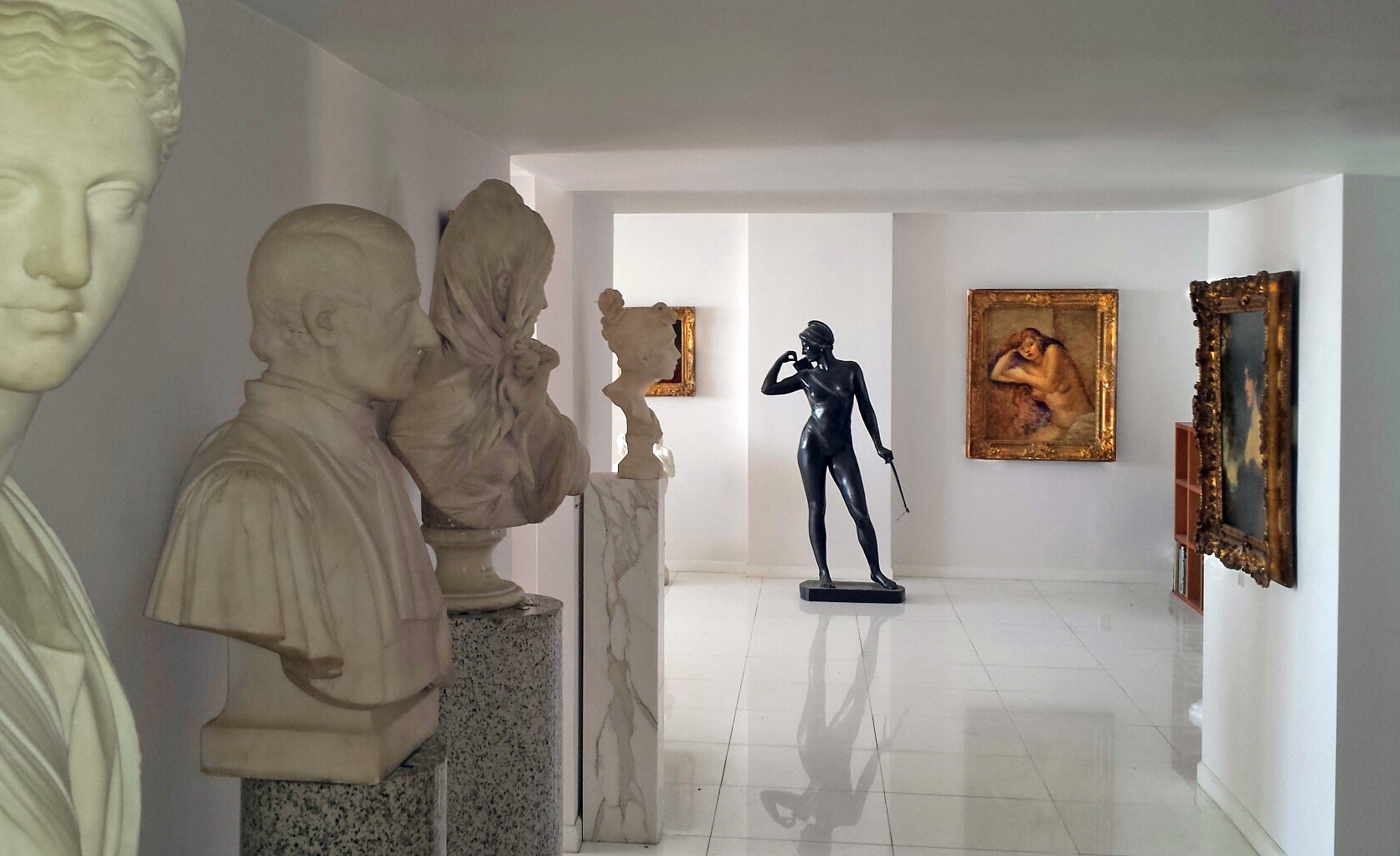
About the Seller
4.9
Platinum Seller
These expertly vetted sellers are 1stDibs' most experienced sellers and are rated highest by our customers.
Established in 2005
1stDibs seller since 2016
102 sales on 1stDibs
Typical response time: 1 hour
- ShippingRetrieving quote...Ships From: Miami, FL
- Return PolicyA return for this item may be initiated within 3 days of delivery.
More From This SellerView All
- Happy California Prune Farmers - Female Illustrator - Mid CenturyLocated in Miami, FLCommercial illustration depicting happy California framers for California Prunes. The work is rendered in a charming and highly stylized manner. Unfr...Category
1950s American Modern Figurative Paintings
MaterialsGouache
- Pulp Magazine Marine Combat Scene Shoot Out in Blue NoirLocated in Miami, FLWhat makes this work important? It's not that it's a commissioned artwork for a men's 60s pulp adventure magazine depicting the instant a soldier is shot. The big point of the painting is how brilliantly the formal elements are thought out, designed, and executed. John McDermott tells a story using a complex figural composition in an unexpected wide-angle vision. The work is as abstract as it is representation. His use of light is significant because it creates a high-contrast two-color style that bears the mark of its creator. This is a work done by a master artist/illustrator without peers compared to artists living today. If the contemporary art world gave awards for draftsmanship, painting technique, and graphic design .... John McDermott would win the highest accolades. Initialed lower left - unframed John McDermott (August 30, 1919 – April 20, 1977), also known under the pen names J.M. Ryan and Mariner, was an American illustrator and author noted for action and adventure illustrations.[1] McDermott worked as an in-between and effects animator for Walt Disney Studios and as a US Marine combat artist,before establishing himself as a cover illustrator for 1950s paperbacks and pulp magazines such as Argosy, American Weekly, and Outdoor Life. Under his J.M. Ryan pen name, he wrote the novels The Rat Factory (1971), a derogatory satire of Walt Disney and the Disney studio; Brooks Wilson Ltd (1967), on which the 1970 film Loving was based; and Mother's Day (1969) about Ma Barker. Under his own name, he novelized director-writer Bo Widerberg's screenplay for the 1971 film Joe Hill, which would be his final published book. Early life John Richard McDermott was born 30 August 1919 in Pueblo, Colorado, the younger of two sons of Henry McDermott, an oil broker. McDermott was a young child when his father committed suicide.[4] The family eventually moved to Los Angeles where McDermott's mother, Hazel, worked in a beauty parlor. He graduated from Hollywood High School in 1936. Although he had had no formal art education, he took a job as an artist at Walt Disney Animation Studios. Career Disney At Disney, McDermott worked as an in-betweener and effects animator on Brave Little Tailor, Pinocchio, The Reluctant Dragon and Fantasia. His experiences while working at Disney, particularly during the time of the 1941 Disney animators' strike, would later become the basis for his 1969 satirical novel The Rat Factory. McDermott left Disney to fight with US forces during World War II. US Marines McDermott World War II sketch titled "Buddy is Wounded" On September 29, 1942, McDermott enlisted with the US Marine Corps. He served as a "pistol and palette" combat artist assigned to the map-making section. As a sergeant with the III Amphibious Corps, McDermott was involved in battles in the South Pacific theater of war, documenting the Guam, Okinawa and the Guadalcanal Campaigns. McDermott considered his wartime years to be his art education. "In the Marines, as a combat artist, I traveled with the troops and for three years got all the drawing opportunity anyone could want. My work changed enormously during this time and I’m sure it was due to constant drawing, every single day, from life, just putting down what I saw around me. In a few instances it was a dangerous kind of scholarship." According to the Marine Corps history journal Fortitudine, McDermott was so prolific that his contemporary style pen-and-ink sketches became easily recognizable to both Marines, from published work in Leatherneck Magazine, and civilians, from glossy copies supplied by the Marine Corps to the nation's press.His wartime art appears in World War II history books and is displayed at the Pentagon and the National Museum of the Marine Corps. Illustration Following the end of World War II, McDermott moved from California to New York City to work as a freelance illustrator. McDermott made his reputation drawing modern action, war and adventure scenes. His work adorned the covers and inside story pages of popular pulp magazines of the 1950s such as Argosy, Adventure, Blue Book, Outdoor Life and American Weekly. McDermott's illustrations appeared on numerous covers of 1950s paperback novels published by Dell, Fawcett Gold Medal, Bantam Mystery and others. His action graphics were geared toward thriller and detective genres, such as Donald Hamilton's Matt Helm books Murderers' Row and The Betrayers. He also created covers for science fiction comic titles such as Voyage to the Deep[citation needed] and horror-themed paperbacks such as the classic 1955 science fiction novel The Body Snatchers...Category
1960s American Realist Figurative Paintings
MaterialsIllustration Board, Gouache
- Wheels of Industry Past and Present, Golden Age of Illustration - Standard OilLocated in Miami, FLThis Golden Age of Illustration painting juxtaposes modern and ancient industrial practices. Giant eclectic generators from the current ti...Category
Mid-20th Century Academic Landscape Paintings
MaterialsGouache, Board
- Futurist Vision - Mid-Century New York Skyline - Industrial ProgressLocated in Miami, FLRarely do you come across a work of art that is vastly different than just about anything you see. This work is undeniably brilliant and a sheer pleasure to behold. Alexander Leydenfrost...Category
1950s Art Deco Landscape Paintings
MaterialsGouache, Charcoal, Graphite, Board
- Black Wolves Attack Two People Tied Up, Children's Books IllustrationBy Alice and Martin ProvensenLocated in Miami, FLAlice and Martin Provensen were an American couple who illustrated more than 40 children's books together. In 1984, the won the Caldecott for The Glorious Flight, the story of aviator Louis Blériot...Category
1960s Outsider Art Figurative Paintings
MaterialsBoard, Gouache
- Soldier Shooting Gun with Bikini Girls, Mid-Century Mens Magazine WarBy Mort KünstlerLocated in Miami, FLThe artist tells a whole action-packed story in one picture. A handsome young soldier shoots his pistol at a passing bomb-dropping airplane. The close call splashes water on him and his two sexy girl...Category
1960s Realist Figurative Paintings
MaterialsBoard, Gouache, Pencil
You May Also Like
- Simka Simkhovitch WPA Artist Oil Painting Gouache American Modernist PowerlineBy Simka SimkhovitchLocated in Surfside, FLSimka Simkhovitch (Russian/American 1893 - 1949) This came with a small grouping from the artist's family, some were hand signed some were not. These were studies for larger paintings. Simka Simkhovitch (Симха Файбусович Симхович) (aka Simka Faibusovich Simkhovich) (Novozybkov, Russia May 21, 1885 O.S./June 2, 1885 N.S.—Greenwich, Connecticut February 25, 1949) was a Ukrainian-Russian Jewish artist and immigrant to the United States. He painted theater scenery in his early career and then had several showings in galleries in New York City. Winning Works Progress Administration (WPA) commissions in the 1930s, he completed murals for the post offices in Jackson, Mississippi and Beaufort, North Carolina. His works are in the permanent collections of the Dallas Museum of Art, the National Museum of American Art and the Whitney Museum of American Art. Born outside Kyiv (Petrograd Ukraine) into a Jewish family who owned a small department store. During a severe case of measles when he was seven, Simcha Simchovitch sketched the views outside his window and decided to become an artist, over his father's objections. Beginning in 1905, he studied at the Grekov Odessa Art School and upon completion of his studies in 1911 received a recommendation to be admitted to the Imperial Academy of Arts. Though he enrolled to begin classes in architecture, painting, and sculpture at the Imperial Academy, he was dropped from the school roster in December because of the quota on the number of Jewish students and drafted into the army. Simchovitch served as a private in the 175th Infantry Regiment Baturyn [ru] until his demobilization in 1912. Re-enrolling in the Imperial Academy, he audited classes. Simka Simkhovitch exhibited paintings and sculptures in 1918 as part of an exhibition of Jewish artists and in 1919 placed 1st in the competition "The Great Russian Revolution" with a painting called "Russian Revolution" which was hung in the State Museum of Revolution. In 1922, Simkha Simkhovitch exhibited at the International Book Fair in Florence (Italian: Fiera Internazionale del Libro di Firenze). In 1924, Simkhovitch came to the United States to make illustrations for Soviet textbooks and decided to immigrate instead. Initially he supported himself by doing commercial art and a few portrait commissions. In 1927, he was hired to paint a screen for a scene in the play "The Command to Love" by Fritz Gottwald and Rudolph Lothar which was playing at the Longacre Theatre on Broadway. Art dealers began clamoring for the screen and Simkhovitch began a career as a screen painter for the theater. Catching the attention of the screenwriter, Ernest Pascal, he worked as an illustrator for Pascal, who then introduced him to gallery owner, Marie Sterner. Simkhovitch's works appeared at the Marie Sterner Gallery beginning with a 1927 exhibit and were repeated the following year. Simkhovitch had an exhibit in 1929 at Sterner's on circus paintings. In 1931, he held a showing of works at the Helen Hackett Gallery, in New York City and later that same year he was one of the featured artists of a special exhibit in San Francisco at the California Palace of the Legion of Honor in Lincoln Park. The exhibit was coordinated by Marie Sterner and included four watercolors, including one titled "Nudes". He is of the generation of Russian Soviet artists such as Isaac Pailes, Serge Charchoune, Marc Chagall, Chana Orloff, Isaac Ilyich Levitan, and Ossip Zadkine. In 1936, Simkhovitch was selected to complete the mural for the WPA Post office project in Jackson, Mississippi. The mural was hung in the post office and courthouse in 1938 depicted a plantation theme. Painted on the wall behind the judge’s bench, “Pursuits of Life in Mississippi”, a depiction of black workers engaged in manual labor amid scenes of white professionals and socialites, was eventually covered over in later years during renovations due to its stereotypical African American imagery. Simka painted what he thought was typical of Jackson. His impression of pre-civil rights Mississippi was evidently Greek Revival column houses, weeping willow trees, working class families, and the oppression of African Americans. He painted African American men picking cotton, while a white man took account of the harvest and a white judge advised a white family, calling it Pursuits of Life in Mississippi. Though clearly endorsed by the government and initially generally well-received, the mural soon raised concerns with locals as the climate toward racial segregation began to change. The main concern was whether depictions that show African Americans in subjugated societal roles should be featured in a courtroom. The following year, his painting "Holiday" won praise at an exhibition in Lincoln, Nebraska. In 1940, Simkhovitch's second WPA post office project was completed when four murals, "The Cape Lookout Lighthouse and the Orville W. Mail Boat", "The Wreck of the Crissie Wright", "Sand Ponies" and "Canada Geese" were installed in Beaufort, North Carolina. The works were commissioned in 1938 and did not generate the controversy that the Jackson mural had. The main mural is "The Wreck of the Crissie Wright" and depicts a shipwreck which had occurred in Beaufort in 1866. "The Cape Lookout Lighthouse and the Orville W. Mail Boat" depicted the lighthouse built in 1859 and the mail boat that was running mail during the time which Simkhovitch was there. The boat ran mail for the area until 1957. "Sand Ponies" shows the wild horses common to the North Carolina barrier islands and "Canada Geese" showed the importance of hunting and fishing in the area. All four murals were restored in the 1990s by Elisabeth Speight, daughter of two other WPA muralists, Francis Speight...Category
1930s American Modern Landscape Paintings
MaterialsGouache, Oil, Board
- 1950s "Figure in Shadow" Figurative Gouache Painting America ModernistBy Donald StacyLocated in Arp, TXDonald Stacy "Figure in Shadow" c.1950s Gouache paint on paper 24" x 18" unframed Unsigned Came from artist's estate Donald Stacy (1925-2011) New Jersey Studied: Newark School of Fine Art The Art Students League Pratt Graphic Arts Center University of Paris 1953-54 University of Aix-en-Provence 1954-55 Faculty: Art Department of the New School Museum of Modern Art School of Visual Arts Stacy Studio Workshop Exhibitions: Grand Central Moderns George Wittenborn The New School Print Exhibitions, Chicago University of Oklahoma Honolulu Museum Monclair Museum Wisconsin State College Louisiana Art...Category
Mid-20th Century American Modern Figurative Paintings
MaterialsPaper, Gouache
- Artists Sketching, California, 1940s Large Modernist Gouache Landscape PaintingBy Frederick ShaneLocated in Denver, CO"Artists Sketching (California)" is an American Modernist scene of three artists working with mountains in the background. Gouache on paper, signed, titled, and dated by the artist in the lower margin. Housed in a custom frame with all archival materials measuring 25.5 x 37.5 x 1.5 inches; image dimensions measure 20.25 x 29.75 inches. Provenance: Estate of the Artist, Frederick Shane About the artist: Painter and printmaker, Missouri regionalist Frederick E. Shane specialized in genre scenes, landscapes, seascapes and portraits executed in a variety of media: oil, watercolor, mixed media, gouache, tempera and lithography. Fundamentally a realist, his work also contains some abstraction, expressionism and surrealism used in treating his subject matter. In the summers of 1925-26 Shane studied with Randall Davey at the recently-founded Broadmoor Academy in Colorado Springs. The Academy was established in 1919 by Spencer and Julie Penrose, prominent philanthropists and art patrons, who donated their family residence for the creation of a local art institution. In the 1940s and early 1950s Shane maintained his contact with Colorado Springs Fine Arts Center (the successor institution to the Broadmoor Academy in 1936). He participated in a number of its annual Artists West of the Mississippi exhibitions and also became a close friend of Boardman Robinson, the Center’s director, and visiting artist Adolph Dehn...Category
1940s American Modern Landscape Paintings
MaterialsGouache
- Acoma Pueblo, New Mexico, 1970s Southwest Landscape Scene Gouache PaintingLocated in Denver, CO"Acoma Pueble (New Mexico) is a gouache on paper painting by Wolfgang Pogzoba (1936-1982) from 1978 of a landscape and an adobe home over a cliff side in the town of Acoma Pueblo, NM. Presented in a custom frame, outer dimensions measure 22 ⅜ x 25 inches. Image size is 12 x 15 inches. The Acoma Pueblo is located approximately 60 miles west of Albuquerque, New Mexico. Painting is clean and in good condition - please contact us for a detailed condition report. Expedited and international shipping is available - please contact us for a quote. About the Artist: Wolfgang Pogzeba...Category
1970s American Modern Landscape Paintings
MaterialsPaper, Gouache
- Hillside and Stream, early 20th century modernist Cleveland School paintingLocated in Beachwood, OHClara Deike (American, 1881-1964) Hillside and Stream, 1916 Gouache on paper Signed and dated lower right 22 x 18 inches 25.5 x 21.5 inches, framed A graduate of the Cleveland Schoo...Category
1910s American Modern Figurative Paintings
MaterialsGouache
- San Francisco Cable Car WPA Artist Adolf Dehn Modernist Art Gouache Oil PaintingBy Adolf DehnLocated in Surfside, FLADOLF ARTHUR DEHN (American, 1895-1969) San Francisco Bay Area street scene, with Trolley, Streetcar, Cable Car with bay and Alcatraz Island in background. Hand signed LRC. Sight 19" x 15", overall 23" x 19". Adolf Dehn (November 22, 1895 – May 19, 1968) was an American artist known mainly as a lithographer. Throughout his artistic career, he participated in and helped define some important movements in American art, including regionalism, social realism, and caricature. A two-time recipient of the Guggenheim Fellowship, he was known for both his technical skills and his high-spirited, droll depictions of human foibles. Adolph Dehn was born in 1895 in Waterville, Minnesota. He began creating artwork at the age of six, and by the time of his death had created nearly 650 images. Dehn went to the Minneapolis School of Art (known today as the Minneapolis College of Art and Design), where he met and became a close friend of Wanda Gag. In 1917 he and Gág were two of only a dozen students in the country to earn a scholarship to the Art Students League of New York. He was drafted to serve in World War I in 1918, but declared himself a conscientious objector and spent four months in a guardhouse detention camp in Spartanburg, SC and then worked for eight months as a painting teacher at an arm rehabilitation hospital in Asheville, NC. Later, Dehn returned to the Art Students League for another year of study and created his first lithograph, The Harvest. In 1921 Dehn's lithographs were featured in his first exhibition at Weyhe Gallery in New York City. From 1920 to 1921 in Manhattan, he was connected to New York's politically left-leaning activists. In 1921, he went to Europe. In Paris and Vienna he belonged to a group of expatriate intellectuals and artists, including Andrée Ruellan, Gertrude Stein, and ee cummings...Category
1930s American Modern Figurative Paintings
MaterialsOil, Gouache
Recently Viewed
View AllMore Ways To Browse
Kathryn Myers
Disney 14k
Sky Diver
Willy Belinfante
Swinging Wonder
Tip Freeman Art
Cotes Du Rhone Village
Damnation Of Faust
Electric Guitar Left Handed
Chautauqua Lake
Paintings Depicting Jewelry
Avelino Sanher
Cartier Bangalore
Edward Beale
America Martin Works On Paper
Old Man Wood Statues
Pennsylvania House Oak
Montespertoli Florence
